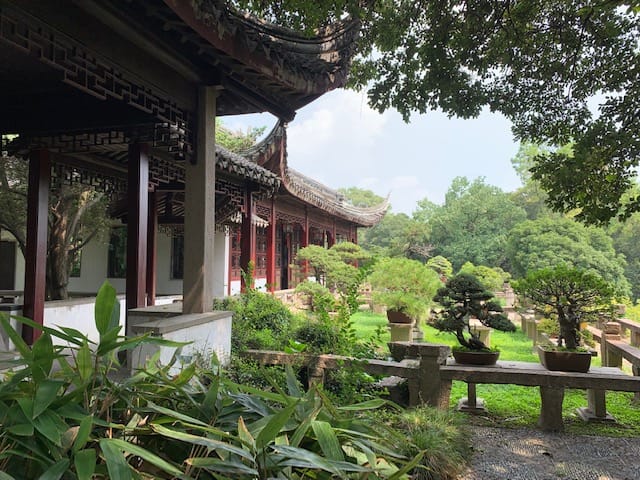Today we set out to learn a bit about the history of Suzhou by visiting one of the most sacred places in the area—Tiger Hill.
Tiger Hill has long been revered as a site of local (and even national) importance and is considered the “first place of interest” in Suzhou, China. It is a natural rise that is home to many uniquely-shaped rocks, vibrant freshwater springs and wooded areas.


According to historic records, Fuchai, Emperor of Wu State (during the Spring and Autumn Period), buried his father, Helu, here. Legend says, that three days after the burial, a white tiger was seen to be crouching on the tomb, giving the site its name.

Now, for a little history: In the Eastern Jin Dynasty, Wang Xun and Wang Min (two brothers who were also government officials) built their houses into the hill, which was later named Huqiu House or “Tiger Hill House”. In the beginning of the Tang Dynasty, in order to avoid the word Hu (meaning “tiger”) since it was the first name of the Emperor Li Hu, Huqiu House was renamed Wuqiu Bao’en House. In the Song Dynasty, it was again renamed as Yunyan Buddhist Temple, and yet again in the Qing Dynasty as the Hapu Buddhist Temple.
Needless to say, after holding significance for centuries, Tiger Hill has become a place of vast historical richness.

But let’s not skip over the obvious… it’s a damn fine walk.
The winding paths of Tiger Hill meander through pockets of bamboo, across bridges, over streams and beside cliff faces. At the top of the hill stands a centuries-old pagoda that towers over the surrounding cityscape. It’s beautiful …and also a little trippy, as it now has a slight lean and feels like it might fall on you when standing on its northwest side.

This little historical journey was definitely worth it!

